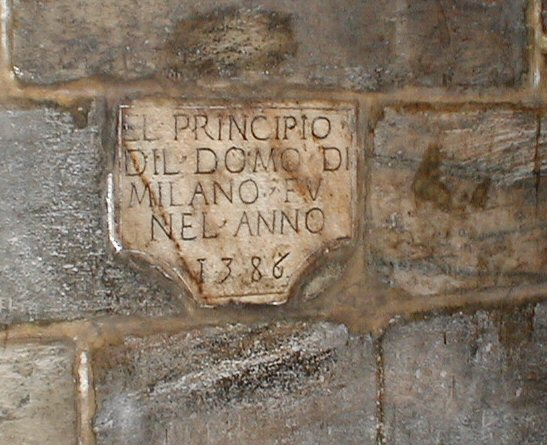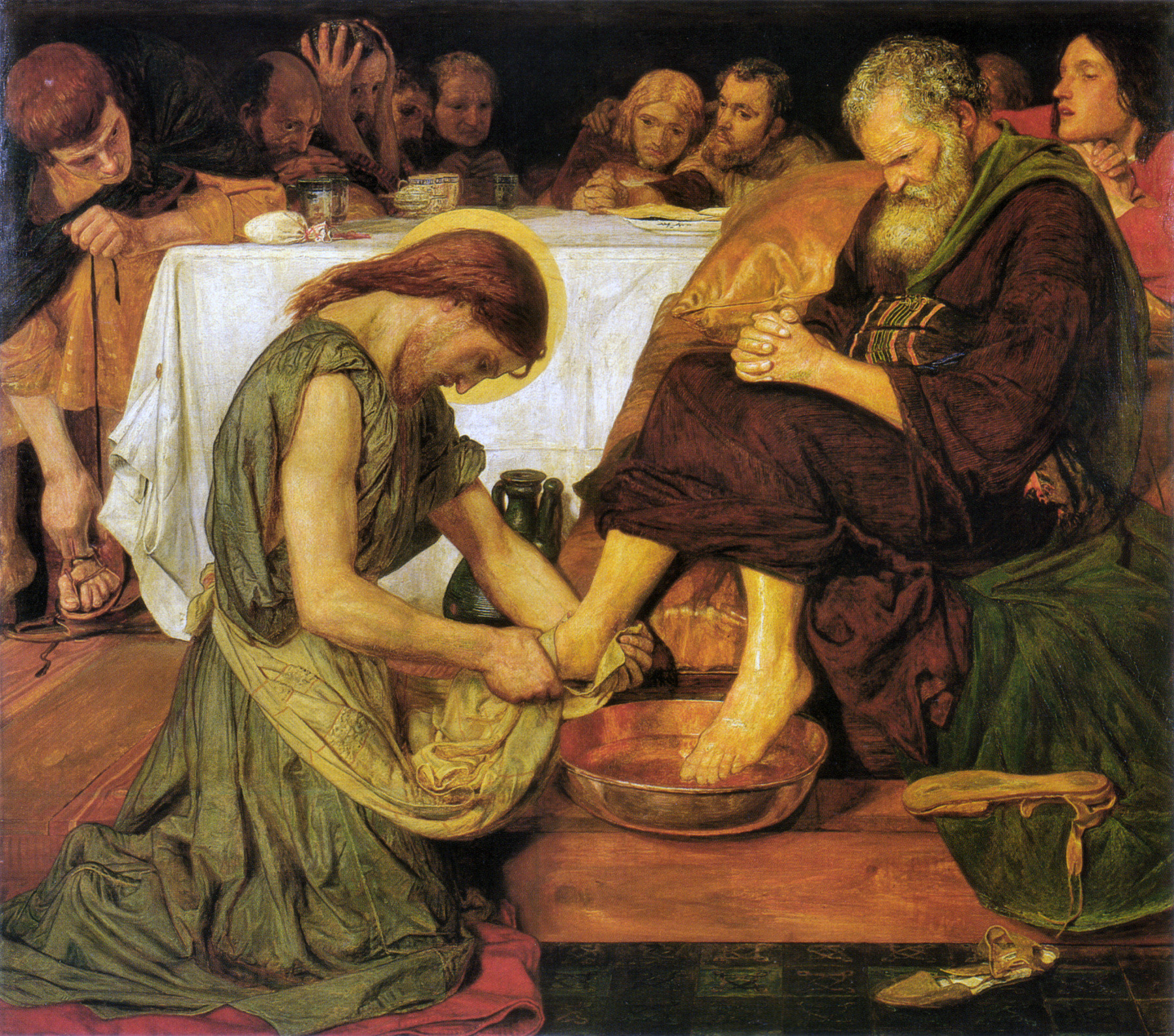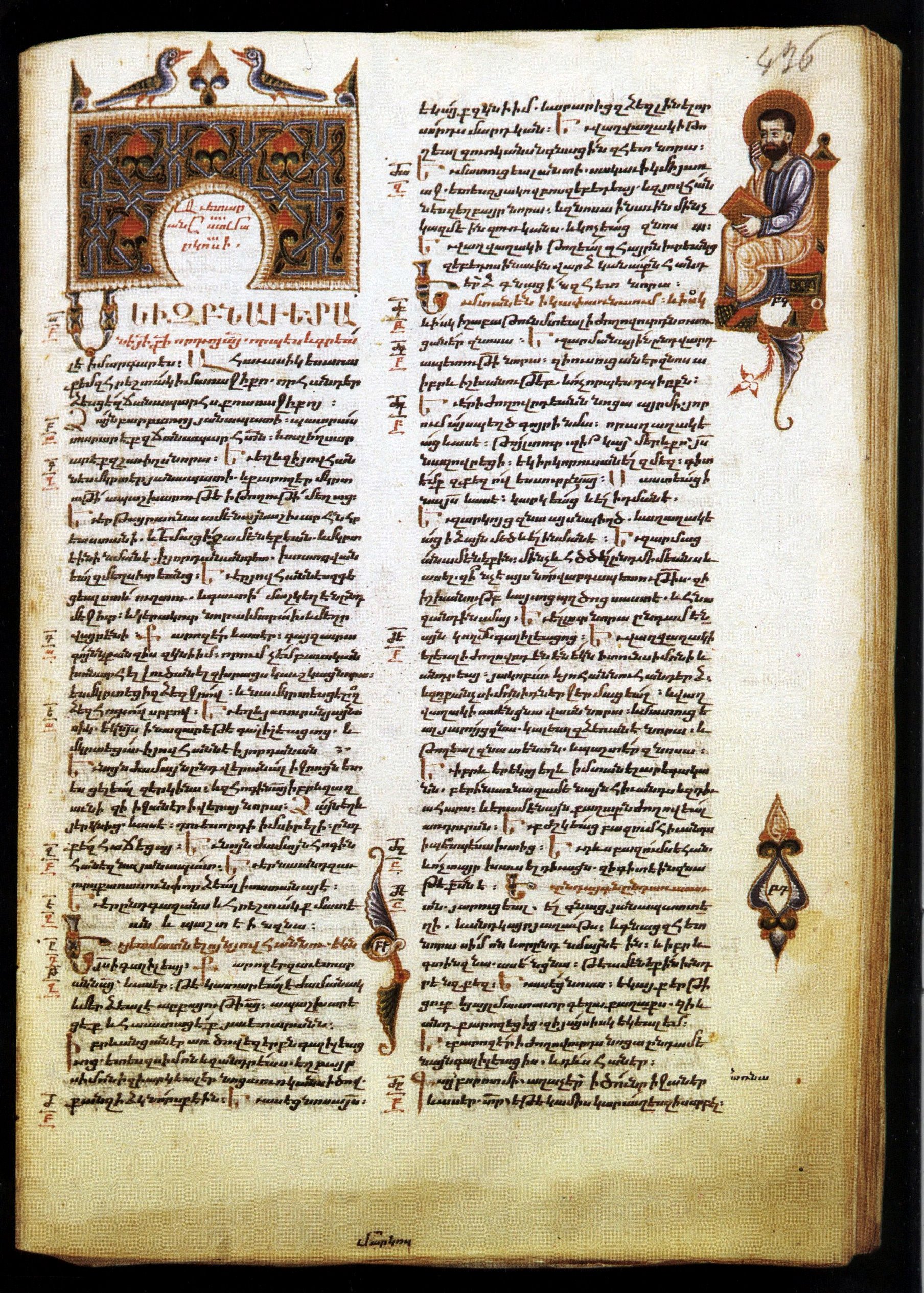|
Calimerius
:''There is also a beatus named Calimerius of Montechiaro (ca. 1430-1521).'' Calimerius ( it, Calimero, Byzantine Greek: ''Καλημέριος'') (died 280 AD) was an early bishop of Milan. He is honoured as a Saint in the Catholic and Eastern Orthodox churches and his feast day is on July 31. Life The only thing known for certain about him was that he was a bishop whose relics were conserved in the Basilica of Saint Calimerius in Milan, after his death. He was probably not a contemporary and disciple of Pope Telesphorus (2nd century), as is often stated, but lived in the third century, with an episcopate of 270–280. Legends According to one version his legend, he was born to a noble Roman family, entered military service and reached the rank of officer when he was converted to Christianity by saints Faustinus and Jovita. According to another legend, he was born in Greece, and was educated at Rome. He was a disciple of Pope Telesphorus. He succeeded St. Castricianus (''San ... [...More Info...] [...Related Items...] OR: [Wikipedia] [Google] [Baidu] |
|
|
Calimerius Of Montechiaro
:''There is also a beatus named Calimerius of Montechiaro (ca. 1430-1521).'' Calimerius ( it, Calimero, Byzantine Greek: ''Καλημέριος'') (died 280 AD) was an early bishop of Milan. He is honoured as a Saint in the Catholic and Eastern Orthodox churches and his feast day is on July 31. Life The only thing known for certain about him was that he was a bishop whose relics were conserved in the Basilica of Saint Calimerius in Milan, after his death. He was probably not a contemporary and disciple of Pope Telesphorus (2nd century), as is often stated, but lived in the third century, with an episcopate of 270–280. Legends According to one version his legend, he was born to a noble Roman family, entered military service and reached the rank of officer when he was converted to Christianity by saints Faustinus and Jovita. According to another legend, he was born in Greece, and was educated at Rome. He was a disciple of Pope Telesphorus. He succeeded St. Castricianus ( ... [...More Info...] [...Related Items...] OR: [Wikipedia] [Google] [Baidu] |
|
|
Basilica Di San Calimero
The Basilica di San Calimero is a church in Milan, northern Italy. Its name refers to Saint Calimerius (died 190 AD), an early bishop of the city. It dates from the 5th century but was almost completely rebuilt in 1882 by the architect Angelo Colla in an attempt to restore it to the "original" medieval structure. What remains of the ancient church include: the 16th century crypt, with a noble frescoed vault by the Fiammenghini; a small fresco with the ''Madonna and Two Female Saints'' (15th century, attributed to Cristoforo Moretti) in the apse; a ''Crucifixion'' by Il Cerano, and a noteworthy ''Nativity'' by Marco d'Oggiono. Other medieval frescoes are in the annexed sacristy. The crypt also houses Calimerius' relics and a pit located in the same place in which the former's bones were found in the water. See also * Early Christian churches in Milan Early Christian churches in Milan are the first churches built immediately after the Edict of Milan (Edictum Mediolanense) i ... [...More Info...] [...Related Items...] OR: [Wikipedia] [Google] [Baidu] |
|
|
Castritian
Castritian ( la, Castritianus, it, Castriziano) was Bishop of Milan in mid 3rd-century. He is honoured as a Saint in the Catholic Church and his feast day is on December 1. Life Almost nothing is known about the life and the episcopate of Castritian, except that he was bishop of Milan in mid 3rd-century, and that his corpse was allegedly buried in a cemetery in the area of Porta Romana, not far from the present Basilica of Saint Calimerius. His relics were later translated into the church of San Giovanni in Conca, which was demolished between the 19th and 20th century. Middle age texts, such as the ''Historia Dataria'' dated 11th-century, add biographic details which are to be considered legendary. Among these legendary traditions, is the length of his episcopate (41 years), the start of his reign shortly after the Emperor Domitian in 97 and the consequent date of death in 138. Also legendary is his consecration as church of a house donated by a certain Philips, even if moder ... [...More Info...] [...Related Items...] OR: [Wikipedia] [Google] [Baidu] |
|
|
Monas (bishop Of Milan)
Monas ( it, Mona) was Bishop of Milan from the end 3rd-century to early 4th-century. He is honoured as a Saint in the Catholic Church and his feast day is on October 12. Life Almost nothing is known about the life and the episcopate of Monas. He was elected as bishop of Milan in some year at the end of the 3rd-century (tentatively on 283), and his episcopate lasted till some year before the 313, when surely the bishop of Milan was already Mirocles. Monas died on the 25 March (the year had not been recorded) and his corpse was buried near the church of Saint Vitalis of Milan (''Basilica Fausta''), that was placed in the area where now stand the Basilica of Sant'Ambrogio. Under the episcopate of Arnulf II (998-1018), on a 12 October, his relic were discovered and translated into the church of Saint Vitale near the Basilica Naboriana (now demolished). On 6 February 1576 his relics were translated by Saint Charles Borromeo to the Cathedral of Milan Milan Cathedral ( it, Duomo d ... [...More Info...] [...Related Items...] OR: [Wikipedia] [Google] [Baidu] |
|
|
Hippolyte Delehaye
Hippolyte Delehaye, S.J., (19 August 1859 – 1 April 1941) was a Belgian Jesuit who was a hagiographical scholar and an outstanding member of the Society of Bollandists. Biography Born in 1859 in Antwerp, Delehaye joined the Society of Jesus in 1876, being received into the novitiate the following year. After making his initial profession of religious vows in 1879, he was sent to study philosophy at the University of Louvain from 1879 to 1882. He was then assigned until 1886 to teach mathematics at the Collège Sainte-Barbe in Ghent (named for the school in Paris, '' alma mater'' of Ignatius of Loyola). Delehaye was ordained in 1890. In 1892 Fr Delehaye was appointed by his Jesuit superiors to be a fellow of the Society of Bollandists, named for the 17th-century hagiographical scholar Jean Bolland, S.J.,and founded the early seventeenth century specifically to study hagiography, research towards the gathering and evaluation of historical documentary sources regarding the li ... [...More Info...] [...Related Items...] OR: [Wikipedia] [Google] [Baidu] |
|
|
Saints Faustinus And Jovita
Saints Jovita and Faustinus were said to be Christian martyrs under Hadrian. Their traditional date of death is 120. They are patron saints of Brescia. Traditional vita Tradition states that they were members of a noble family of Brescia in Lombardy (northern Italy). Jovinus, the older brother, was a preacher; Faustinus, a deacon. For their fearless preaching of the Gospel, they were arraigned before the Roman Emperor Hadrian, who at Brescia, Rome and Naples, subjected them to frightful torments, after which they were beheaded at Brescia in the year 120, according to the Bollandists, although historian Paul Allard (''Histoire des Persécutions pendant les Deux Premiers Siècles'', Paris, 1885) places the date as early as 118.Murphy, John F.X. "Sts. Faustinus and Jovita." The Catholic Encyclope ... [...More Info...] [...Related Items...] OR: [Wikipedia] [Google] [Baidu] |
|
 |
Cathedral Of Milan
Milan Cathedral ( it, Duomo di Milano ; lmo, Domm de Milan ), or Metropolitan Cathedral-Basilica of the Nativity of Saint Mary ( it, Basilica cattedrale metropolitana di Santa Maria Nascente, links=no), is the cathedral church of Milan, Lombardy, Italy. Dedicated to the Nativity of St Mary (''Santa Maria Nascente''), it is the seat of the Archbishop of Milan, currently Archbishop Mario Delpini. The cathedral took nearly six centuries to complete: construction began in 1386, and the final details were completed in 1965. It is the largest church in the Italian Republic—the larger St. Peter's Basilica is in the State of Vatican City, a sovereign state—and possibly the second largest in Europe and the third largest in the world (its size and position remain a matter of debate). History Milan's layout, with streets either radiating from the Duomo or circling it, reveals that the Duomo occupies what was the most central site in Roman Mediolanum, that of the public b ... [...More Info...] [...Related Items...] OR: [Wikipedia] [Google] [Baidu] |
 |
Saint Barnabas
Barnabas (; arc, ܒܪܢܒܐ; grc, Βαρνάβας), born Joseph () or Joses (), was according to tradition an early Christian, one of the prominent Christian disciples in Jerusalem. According to Acts 4:36, Barnabas was a Cypriot Jew. Named an apostle in Acts 14:14, he and Paul the Apostle undertook missionary journeys together and defended Gentile converts against the Judaizers. They traveled together making more converts (), and participated in the Council of Jerusalem (). Barnabas and Paul successfully evangelized among the "God-fearing" Gentiles who attended synagogues in various Hellenized cities of Anatolia. Barnabas' story appears in the Acts of the Apostles, and Paul mentions him in some of his epistles. Tertullian named him as the author of the Epistle to the Hebrews, but this and other attributions are conjecture. The Epistle of Barnabas was ascribed to him by Clement of Alexandria and others in the early church and the epistle is included under his name in ... [...More Info...] [...Related Items...] OR: [Wikipedia] [Google] [Baidu] |
 |
Apostolic Age
Christianity in the 1st century covers the formative history of Christianity from the start of the ministry of Jesus (–29 AD) to the death of the last of the Twelve Apostles () and is thus also known as the Apostolic Age. Early Christianity developed out of the eschatological ministry of Jesus. Subsequent to Jesus' death, his earliest followers formed an apocalyptic messianic Jewish sect during the late Second Temple period of the 1st century. Initially believing that Jesus' resurrection was the start of the end time, their beliefs soon changed in the expected Second Coming of Jesus and the start of God's Kingdom at a later point in time. Paul the Apostle, a Pharisee Jew who had persecuted the early Jewish Christians, converted –36 and started to proselytize among the Gentiles. According to Paul, Gentile converts could be allowed exemption from Jewish commandments, arguing that all are justified by their faith in Jesus. This was part of a gradual split of ear ... [...More Info...] [...Related Items...] OR: [Wikipedia] [Google] [Baidu] |
|
Saint Ennodius
Magnus Felix Ennodius (473 or 47417 July 521 AD) was Bishop of Pavia in 514, and a Latin rhetorician and poet. He was one of four Gallo-Roman aristocrats of the fifth to sixth-century whose letters survive in quantity: the others are Sidonius Apollinaris, prefect of Rome in 468 and bishop of Clermont (died 485), Ruricius bishop of Limoges (died 507) and Alcimus Ecdicius Avitus, bishop of Vienne (died 518). All of them were linked in the tightly bound aristocratic Gallo-Roman network that provided the bishops of Catholic Gaul. He is regarded as a saint, with a feast day of 17 July. Life Ennodius was born at Arelate (Arles) and belonged to a distinguished but impecunious family. As Mommaerts and Kelley observe, "Ennodius claimed in his letters to them to be related to a large number of individuals. Unfortunately, he seldom specified the nature of the relationship."Mommaerts and Kelley, "The Anicii of Gaul and Rome" in John Drinkwater and Hugh Elton, ''Fifth-Century Gaul: A Cr ... [...More Info...] [...Related Items...] OR: [Wikipedia] [Google] [Baidu] |
|
 |
Gospels
Gospel originally meant the Christian message ("the gospel"), but in the 2nd century it came to be used also for the books in which the message was set out. In this sense a gospel can be defined as a loose-knit, episodic narrative of the words and deeds of Jesus, culminating in his trial and death and concluding with various reports of his post-resurrection appearances. Modern scholars are cautious of relying on the gospels uncritically, but nevertheless, they provide a good idea of the public career of Jesus, and critical study can attempt to distinguish the original ideas of Jesus from those of the later authors. The four canonical gospels were probably written between AD 66 and 110. All four were anonymous (with the modern names added in the 2nd century), almost certainly none were by eyewitnesses, and all are the end-products of long oral and written transmission. Mark was the first to be written, using a variety of sources. The authors of Matthew and Luke both independently ... [...More Info...] [...Related Items...] OR: [Wikipedia] [Google] [Baidu] |
|
Christ
Jesus, likely from he, יֵשׁוּעַ, translit=Yēšūaʿ, label= Hebrew/Aramaic ( AD 30 or 33), also referred to as Jesus Christ or Jesus of Nazareth (among other names and titles), was a first-century Jewish preacher and religious leader; he is the central figure of Christianity, the world's largest religion. Most Christians believe he is the incarnation of God the Son and the awaited Messiah (the Christ) prophesied in the Hebrew Bible. Virtually all modern scholars of antiquity agree that Jesus existed historically. Research into the historical Jesus has yielded some uncertainty on the historical reliability of the Gospels and on how closely the Jesus portrayed in the New Testament reflects the historical Jesus, as the only detailed records of Jesus' life are contained in the Gospels. Jesus was a Galilean Jew who was circumcised, was baptized by John the Baptist, began his own ministry and was often referred to as "rabbi". Jesus debated with fe ... [...More Info...] [...Related Items...] OR: [Wikipedia] [Google] [Baidu] |